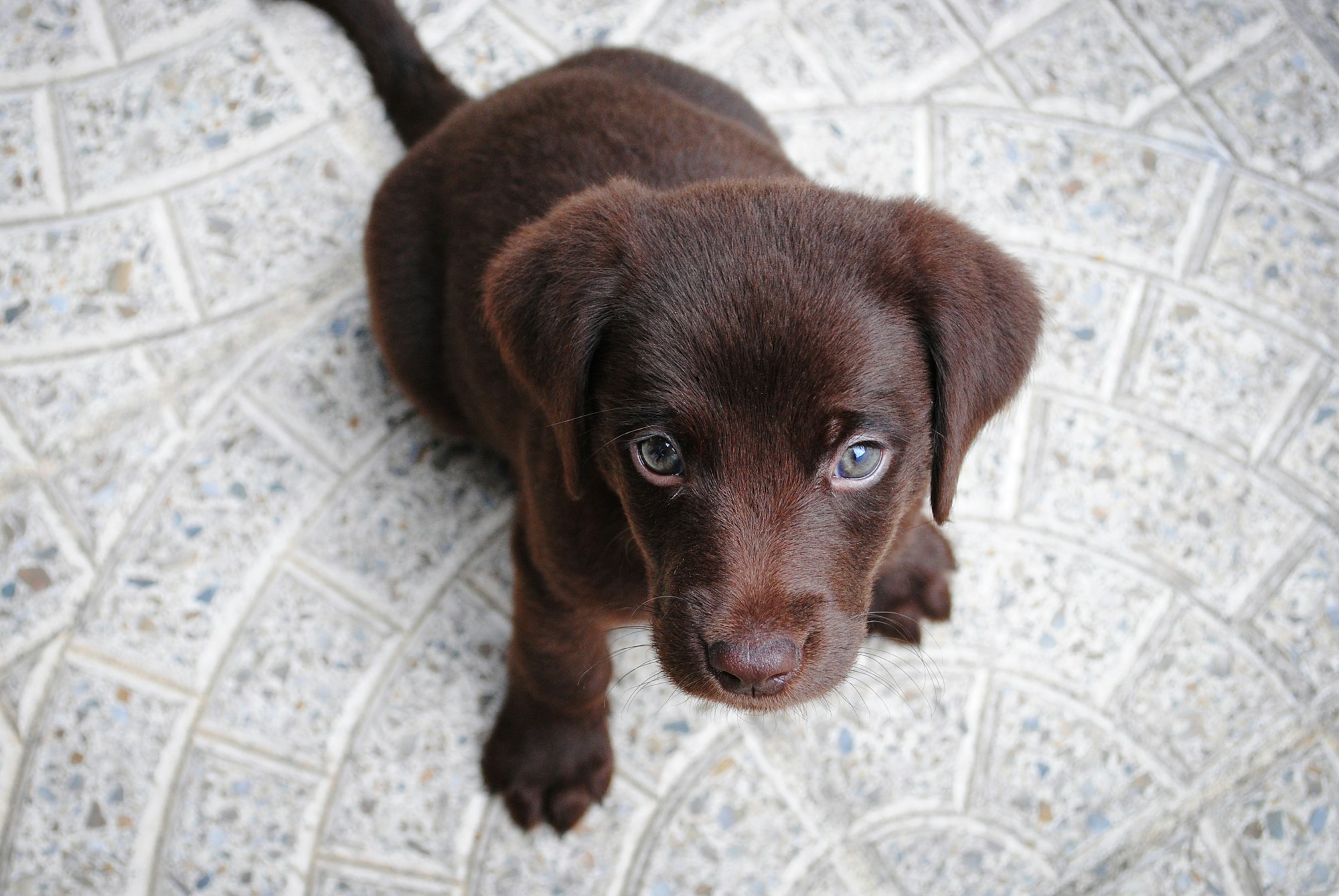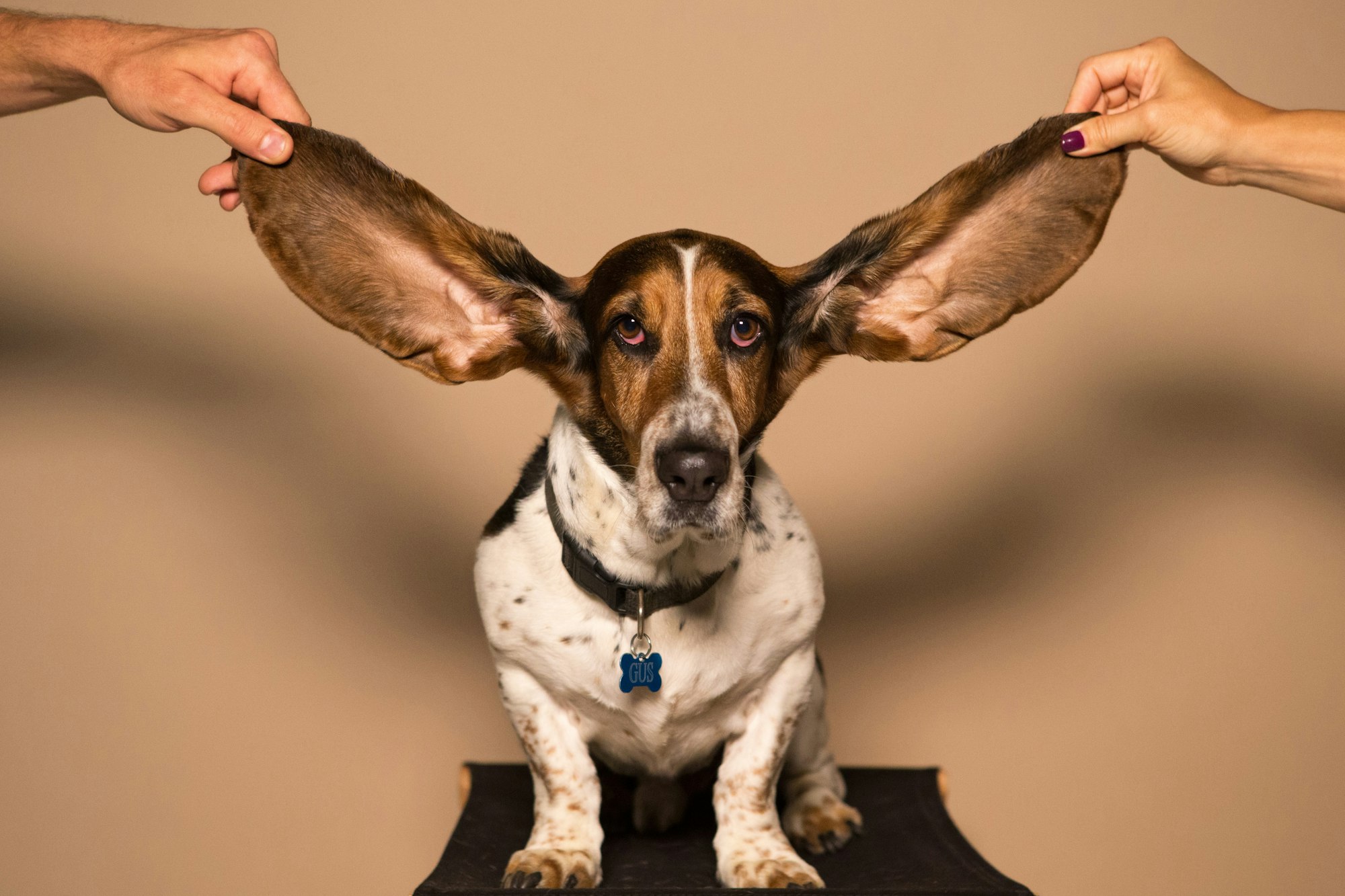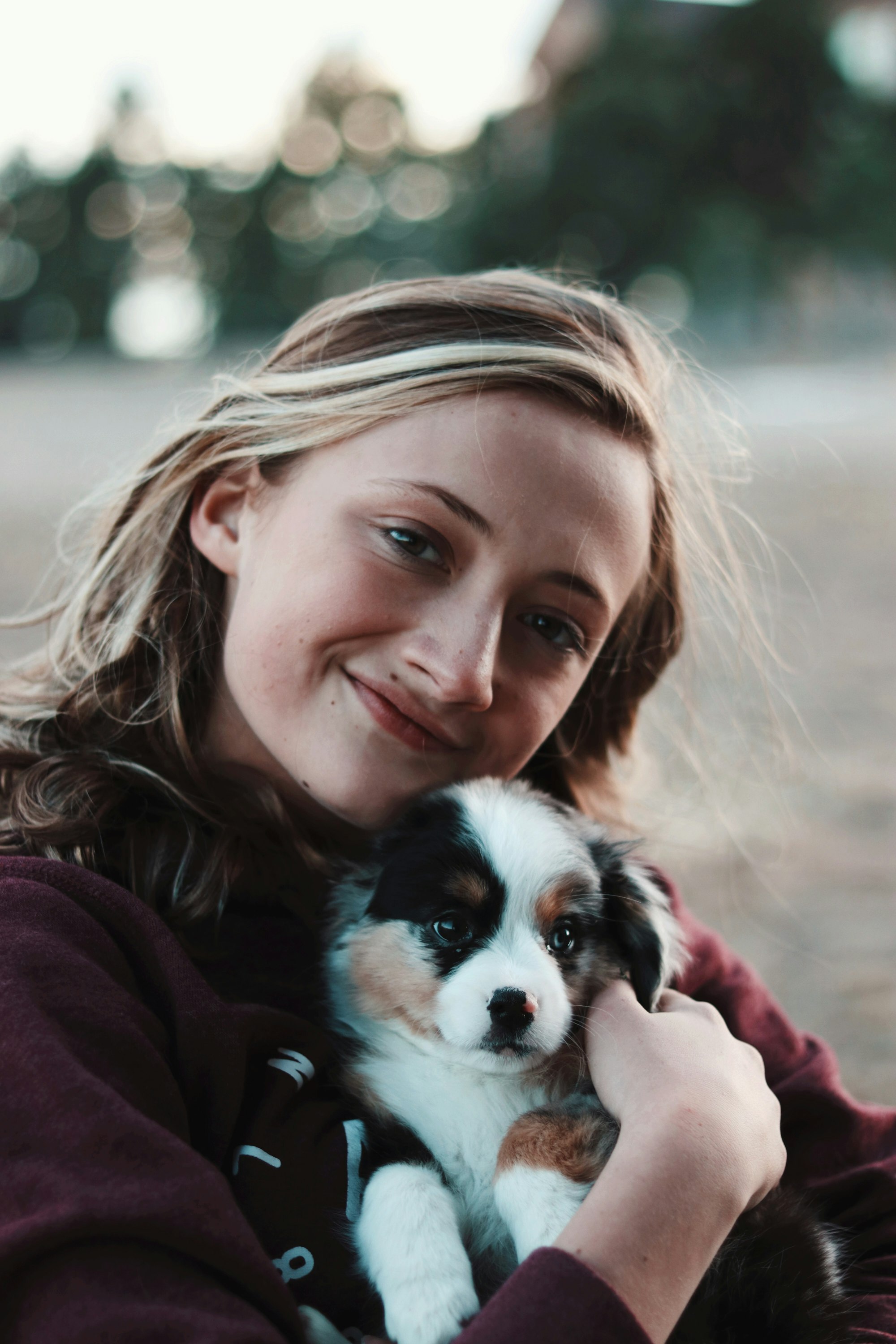Bringing a new puppy into your home marks the beginning of a remarkable journey filled with love, learning, and unforgettable moments. When that new family member is a deaf puppy, the experience becomes even more special, requiring a blend of dedicated care, understanding, and tailored approaches to meet their unique needs.
This comprehensive guide aims to navigate you through the exciting yet intricate journey of raising a deaf puppy. From understanding the nuances of deafness in dogs to practical tips, training strategies, and heartwarming success stories, we're here to inspire, support, and guide you in fostering a nurturing environment where your deaf puppy can thrive and form an unbreakable bond with you.

Understanding Deafness in Puppies
Welcoming a new puppy into your home is a delightful experience, but when faced with the uniqueness of deafness, it's imperative to comprehend the intricacies involved. Deafness in puppies can either be congenital or acquired, each posing distinct challenges for both the puppy and the owner.
Congenital Deafness: This type of deafness is present at birth and is often attributed to genetic factors. Puppies born with congenital deafness may inherit it from their parents, emphasizing the importance of understanding the lineage when acquiring a new furry family member.
Acquired Deafness: On the other hand, acquired deafness can manifest later in a puppy's life due to various factors, such as illness or injury. Identifying the specific cause is pivotal in tailoring care and training methods.

Early Signs of Deafness
Detecting signs of deafness in a puppy requires keen observation and a proactive approach. Early intervention significantly impacts the effectiveness of training and communication strategies.
Lack of Responsiveness:
One of the primary indicators is a lack of response to auditory stimuli. Puppies that exhibit no reaction to common sounds, such as clapping hands or calling their name, may be demonstrating signs of hearing impairment.
At-Home Tests:
Simple at-home tests, like making noises from a distance or clapping behind the puppy, can serve as preliminary assessments of their hearing abilities. These observations provide crucial insights into the extent of the deafness and help in formulating an appropriate care plan.
Challenges Faced by Deaf Puppies
Deaf puppies encounter unique challenges that necessitate a thoughtful and understanding approach from their owners.
Communication Barriers:
The absence of auditory communication channels presents a challenge in conveying commands and establishing understanding. This requires owners to explore alternative methods of communication, emphasizing visual cues, hand signals, and other non-verbal forms of interaction.
Socialization Difficulties:
Deaf puppies may face challenges in socializing with other happy dogs and humans. Since much of canine social interaction relies on vocalizations, deaf puppies might struggle to integrate seamlessly into playgroups. Owners need to be proactive in facilitating positive social experiences and ensuring their puppy's comfort.
Creating a Deaf-Friendly Environment
Ensuring a nurturing and supportive environment is paramount when raising a deaf puppy. Crafting a deaf-friendly setting involves strategic considerations that address the unique needs of a puppy with hearing impairment.
Consistent Routine: Establishing a consistent routine is the foundation of a deaf-friendly environment. Predictability provides a sense of security for the puppy, making it easier for them to navigate daily activities. Regular feeding times, walks, and play sessions contribute to a structured and comfortable living arrangement.
Visual Cues and Signals: In the absence of auditory signals, visual cues become the primary mode of communication. Utilizing hand signals for basic commands, such as sit, stay, and come, enhances the puppy's ability to comprehend and respond. Consistency in these visual signals is crucial for effective communication and training.
Safe Haven Design: Creating a safe haven within your home is essential. This designated space, equipped with the puppy's bed, puzzle toys, and necessities, serves as a retreat where the puppy feels secure. This is especially valuable during times when the household may be noisy or unfamiliar.
Training Techniques for Deaf Puppies
Training a deaf puppy demands innovative and adaptable techniques. The absence of auditory reinforcement necessitates a strategic shift towards visual and tactile methods.
Positive Reinforcement:
Positive reinforcement becomes the cornerstone of training for deaf puppies. Reward-based systems, using treats or toys, reinforce desired behaviors. This positive association motivates the puppy to repeat these actions, creating a foundation for effective training.
Hand Signals and Visual Commands:
Replacing verbal commands with hand signals and visual cues is integral to successful training. Associating specific gestures with actions allows the puppy to grasp commands and expectations. Patience and consistency in using these signals are key components of this agility training approach.
Vibration Collars:
Incorporating vibration collars can be a valuable aid in training. These collars provide tactile feedback, allowing the puppy to sense commands or warnings. However, it is essential to introduce the collar gradually and ensure it is associated with positive experiences.
Establishing Communication Bonds
Building a strong and trusting bond with a deaf puppy relies on intentional efforts and a deep understanding of their unique communication needs.
Patience and Consistency:
Patience is a virtue when establishing communication bonds with a deaf puppy. Consistency in your actions and responses fosters trust. Repeated positive interactions contribute to the development of a strong emotional connection.
Understanding Non-Verbal Cues:
Since vocalizations are not part of the communication repertoire, paying attention to the puppy's non-verbal cues becomes paramount. Understanding their body language, facial expressions, and responses to visual signals allows for a nuanced and effective form of communication.
Quality Time Together:
Spending quality time with your deaf puppy is crucial for building a bond. Engaging in activities they enjoy, such as play or gentle grooming, strengthens the connection and reinforces the positive association with your presence.

Socializing Deaf Puppies
Socialization is a crucial aspect of a puppy's development, and for deaf puppies, it requires intentional efforts to ensure they navigate the social landscape with confidence and ease.
Gradual Introductions:
Introduce your deaf puppy to new environments and experiences gradually. Begin in controlled settings and gradually expose them to various stimuli. This step-by-step approach prevents overwhelming situations and allows the puppy to adjust at their own pace.
Positive Reinforcement in Social Interactions:
Use positive reinforcement during social interactions. Reward your puppy for calm and positive behavior around other dogs, people, and unfamiliar environments. This creates positive associations and fosters a sense of security in social situations.
Observation and Intervention:
Be vigilant in observing your puppy's body language. Deaf puppies rely heavily on visual cues, and attentive observation allows you to intervene if they show signs of stress or discomfort. This proactive approach ensures that socialization remains a positive experience.
Special Considerations in Public Spaces
Taking your deaf puppy to public spaces requires careful consideration of their unique needs and potential challenges that may arise in unfamiliar environments.
Safety Measures in Off-Leash Areas: In off-leash areas, where auditory commands are less effective, prioritize safety. Ensure your puppy is in an enclosed space to prevent them from straying into potentially dangerous situations. Visual cues and hand signals become even more critical in such environments.
Addressing Challenges in Crowded Places: Crowded places pose communication challenges for deaf puppies. Keep your puppy on a leash in bustling areas to maintain control. Introduce them gradually to crowded environments, allowing them to acclimate while ensuring their safety and minimizing stress.
Healthcare for Deaf Puppies
While healthcare practices for deaf puppies align with those for hearing puppies, there are specific considerations to address their unique needs and potential health concerns.
Regular Veterinary Check-ups: Routine veterinary check-ups are essential for all puppies, including those with hearing impairments. Regular examinations help identify and address potential health issues promptly, ensuring your deaf puppy enjoys a long and healthy life.
Addressing Specific Health Concerns: Certain health issues may be more prevalent in deaf puppies, such as skin conditions or allergies. Regularly check their ears for signs of infection, as they may be more prone to ear-related problems. Be proactive in addressing any health concerns and consult with your veterinarian for guidance.
Deaf Puppy and Other Pets
Introducing a deaf puppy to other pets requires a thoughtful and measured approach, ensuring a harmonious relationship within your multi-pet household.
Gradual Introduction: When bringing a deaf puppy into a home with other pets, initiate introductions gradually. Allow pets to become familiar with each other's scents before direct interactions. Visual cues, such as sniffing and body language, play a crucial role in facilitating initial introductions.
Supervised Interactions: During the initial stages, supervise interactions closely. This supervision is crucial for identifying and addressing any signs of stress, discomfort, or misunderstandings between the deaf puppy and existing pets. Intervene promptly if needed to maintain a positive and safe environment.
Positive Reinforcement: Use positive reinforcement to encourage positive interactions between your deaf puppy and other pets. Reward them for calm behavior and positive engagement, fostering a sense of camaraderie and mutual understanding.
Community Support and Resources
Navigating the unique challenges of raising a deaf puppy becomes more manageable with the support of a community and access to valuable resources.

Connecting with Other Owners: Engage with other owners of deaf puppies to share experiences, insights, and advice. Online forums and social media groups dedicated to deaf dogs provide a platform for seeking guidance, sharing successes, and building a supportive network.
Expert Advice and Support Groups: Seek out expert advice from professionals specializing in deaf dogs. Support groups, both online and local, offer a wealth of knowledge and assistance. Drawing from the experiences of others who have successfully raised and trained deaf puppies can be invaluable.
Embracing Uniqueness
Celebrating the individuality of a deaf puppy is a fundamental aspect of their care. Embracing their uniqueness contributes to a positive environment and challenges misconceptions surrounding deaf dogs.
Overcoming Stereotypes:
Challenge stereotypes associated with deaf dogs. Contrary to misconceptions, deaf puppies can lead happy, fulfilling lives with proper care and training. Educate others about the capabilities and adaptability of dogs with hearing impairments.
Showcasing Abilities:
Highlight the remarkable abilities of your deaf puppy. Showcase their intelligence, resilience, and capacity for forming deep bonds. By emphasizing their positive attributes, you contribute to changing perceptions and fostering understanding within your community.

Conclusion
Raising a deaf puppy comes with its challenges, but with the right knowledge, patience, and love, you can create a thriving environment for your four-legged companion. Embrace the uniqueness of your deaf puppy and enjoy the journey of building a strong, lasting bond.
Frequently Asked Questions
- Can a deaf puppy live a normal life?
- Absolutely! With proper care, training, and love, deaf puppies can lead happy and fulfilling lives.
- What training tools are useful for deaf puppies?
- Training tools such as visual cues, hand signals, and vibration collars can be highly effective for deaf puppies.
- How do I socialize my deaf puppy with other dogs?
- Gradual introductions in controlled environments and positive reinforcement are key to successful socialization.
- Are there special considerations for healthcare with deaf puppies?
- Regular veterinary check-ups are essential, and prompt attention to any health concerns is crucial for deaf puppies.
- Where can I find support as the owner of a deaf puppy?
- Online forums, support groups, and organizations specializing in deaf dogs offer valuable support and resources.






